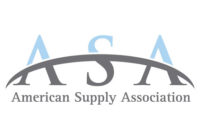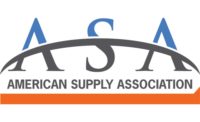A look at OHSA recordkeeping and reporting requirements
Be thorough when reporting a workplace injury.

It is a fundamental aspect of a company’s safety program that there is a published methodology for employees to report work-related injuries and illnesses. All injuries/illnesses, no matter how slight, need to be reported in accordance with company policy.
As a best management practice, all injuries should be recorded on a first-aid log. Employers with more than 10 employees and whose establishments are not classified as a partially exempt industry must record work-related injuries and illnesses using OSHA forms 300, 300A and 301. The log and forms are available in PDF and Excel versions at www.ohsa.gov/recordkeeping/RKforms.html and are now also available at www.asa.net/Safety-Resources.com.
Form 301
OSHA Form 301 entitled the “Injury and Illness Incident Report” includes detailed information about the employee, the injury/illness and initial treatment. OSHA regulations allow employees or their representative access to the entire 301 form if it pertains to themselves and the right-hand portion of the form pertaining to other employees.
Form 300
The OSHA 300 log entitled the “Log of Work-Related Injuries and Illnesses” contains a listing of all “reportable” injuries/illnesses. This includes work-related injuries/illnesses if they result in death; days away from work; restricted work or transfer to another job; medical treatment beyond first aid; loss of consciousness; or diagnosis of a significant injury/illness.
According to OSHA regulations, first aid means the following: using nonprescription medication at nonprescription strength; administering tetanus shots; cleaning wounds; using wound coverings; using hot/cold therapy; using non-rigid means of support; using temporary immobilization devices; drilling a nail or draining a blister; using eye patches; removing foreign bodies from the eye using irrigation or a cotton swab; removing splinters or foreign material by irrigation, tweezers, cotton swabs, etc.; using finger guards; using massages; or drinking fluids for relief of heat stress.
The 300 log requires computation of lost work days. The calculation is based on the number of calendar days the employee is away from work with the count of days missed commencing the day after the incident and ending after 180 days have been counted even if the employee has not returned to work.
Form 300A
OSHA Form 300A entitled “Summary of Work-Related Injuries and Illnesses” is an annual summary of the previous year’s 300 log. It must be signed by a company executive, posted in the workplace and accessible to employees from Feb. 1 to April 30. The 300A log lists the number of cases, days away from work, injury/illness types, average number of employees and total number of hours worked.
The information from this log is the basis of the information required to enter the ASA Safety Award competition. Visit www.asa.net for more details on the awards competition. The award, based on the 2013 300A summary, will be presented at NetworkASA 2014 in Las Vegas next September.
Employers are required to call OSHA at 800/321-OSHA within eight hours to report a fatality or work-related injury that results in inpatient hospitalization of three or more employees. Fatal heart attacks occurring in the work environment also must be reported.
Communicating to employees that all injuries/illnesses must be reported when they occur, properly documenting the circumstances surrounding the event, investigating and curing the root cause of the injury/illness and then recording to meet OSHA regulations will result in a clear path to an effective and compliant safety program, greater productivity, healthy employees working in a safe environment, fewer workers’ compensation claims and a better bottom line.
OSHA recordkeeping instructions, training and guidance material is available from OSHA at www.osha.gov/recordkeeping.
HELPFUL LINKS:
Looking for a reprint of this article?
From high-res PDFs to custom plaques, order your copy today!








